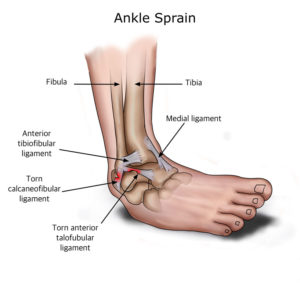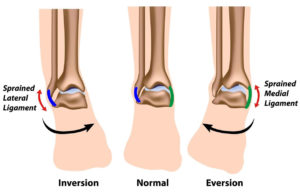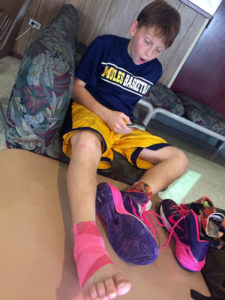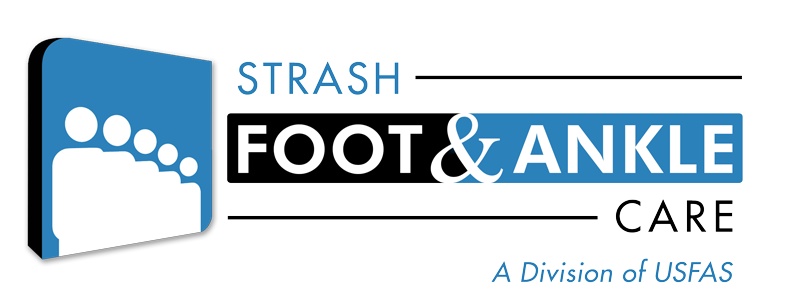19 Mar Ankle Sprains
The most common type of ankle sprain is an inversion injury where the ankle “rolls over”. This is due to the anatomy and biomechanics of the ankle as the ligaments on the inside of the ankle are stronger causing the ankle to roll out and our foot to roll under. During this motion a “pop” is sometimes heard possibly indicating one or more of the lateral ankle ligaments have been torn (or possibly suffering an ankle fracture). Unfortunately, once you sustain an ankle sprain they commonly come back. If the lateral ankle ligaments are stretched or torn, the ankle becomes loose and unstable.

Ankle sprain symptoms vary depending on severity. Often, the ankle is tender, swollen, and discolored (bruised). The ankle can be quite painful to touch and with movement. Walking is usually hampered and may become difficult depending on the severity of the sprain. A feeling of instability may occur, especially in severe ankle sprains when ligaments are torn.

Most ankle sprains need only a period of protection to heal. The healing process takes about four to six weeks. Even a complete ligament tear to one of the ligaments can heal without surgical repair if it is immobilized appropriately.
OUCH! I think I sprained my ankle?

With an initial injury, use R.I.C.E (rest, ice, compression and elevation): Rest: your ankle by not walking on it. Ice: should be immediately applied. It keeps the swelling down. It can be used for 20 to 30 minutes, three or four times a day. Combine ice with wrapping to decrease swelling, pain and dysfunction. Compression: bandages or ace-wraps immobilize and support the injured ankle. Elevate: your ankle above your heart level for 48 hours.
If you’ve suffered an ankle sprain and your pain persists it’s advisable to seek medical attention from your foot and ankle specialist. Your podiatrist will perform a physical exam (test your ankle stability), evaluate your ankle x-rays and depending on the circumstances send you for an MRI.
It is important not to neglect treatment of an ankle sprain as this could lead to chronic instability of your ankle joint and damage to your ankle joint. It may even cause foot, ankle or knee pain.
At Strash Foot and Ankle Care we offer a variety of treatment options aimed at relieving your foot and ankle ailments. If conservative treatment fails, Dr. Strash’s surgical skills and techniques are proven to work, so you can continue dancing, running and allowing your feet and ankles to support you for many more miles. If you are a patient suffering from ankle sprains, please let Strash Foot and Ankle Care help you get back on your feet by calling our office.

